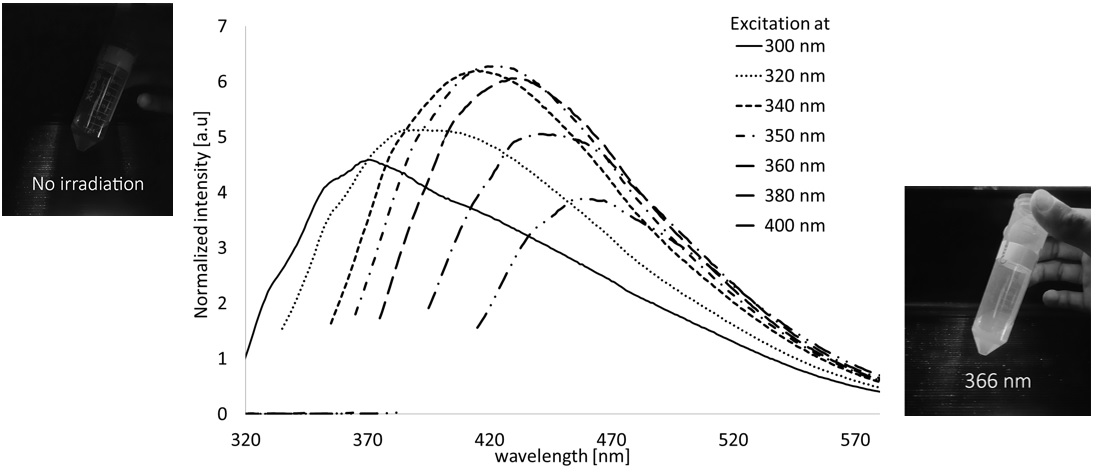Different types of carbon quantum dots obtained from wastes of fermentation
CQDs are a multifunctional material which knew a rapid growth of interest from its discovery in 2004,1 because of their multiples applications: catalysis agents, bio-imaging chromophores, photoluminescent or electroluminescent materials, metal ions detectors and electron-acceptors for photovoltaics.2, 3
Many starting materials have been used to obtain the CQDs. Here we present a new material source which is the wine lees, an expensive-to-treat, phytotoxic waste resulting in vast amounts from the wine fermentation.4
We will present here the procedure leading to an easy, scalable synthetic process for CQDs as well as their characterisation (e.g. photoluminescence, fig.1).

[1] X. Xu, R. Ray, Y. Gu, H. J. Ploehn, L. Gearheart, K. Raker and W. A. Scrivens, J Am Chem Soc, 2004, 126, 12736-12737:
[2] Y. Wang and A. Hu, J Mater Chem C, 2014, 2, 6921-6939.
[3] Y. Du and S. Guo, Nanoscale, 2016, 8, 2532-2543.
[4] R. Liu, D. Wu, S. Liu, K. Koynov, W. Knoll and Q. Li, Angew Chem Int Ed Engl, 2009, 48, 4598-4601.